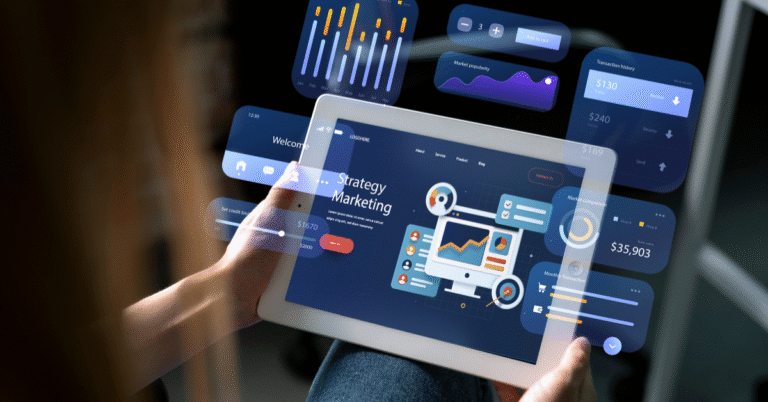Subtotal ₹0.00

Digital advertising has entered a new era, driven by rapid innovation in marketing technology (MarTech). As consumers demand more personalized, relevant, and immersive experiences, advertisers are turning to sophisticated tools that leverage AI, automation, data analytics, and omnichannel integration. The result? Ads that are smarter, faster, and more effective.
This article explores the emerging martech tools transforming digital advertising and reshaping how brands connect with audiences in 2025 and beyond.
AI and Machine Learning are the engines driving modern digital marketing. These technologies analyze vast data sets to uncover hidden insights about customer behavior, interests, and intent. Platforms like Google Ads Smart Bidding, Adobe Sensei, and ChatGPT-powered ad tools enable marketers to create hyper-personalized ad experiences.
AI enhances every stage of digital advertising—from predicting which content resonates best to automating ad placement and optimizing bids in real time. As AI continues to mature, marketers can expect smarter segmentation, improved targeting accuracy, and reduced ad spend waste.
Data is the backbone of digital advertising. Martech tools such as Segment, Salesforce CDP, and Treasure Data centralize audience data from multiple sources into a single view.
While DMPs primarily focus on anonymous audience data (for ad targeting), CDPs collect and unify first-party customer data, providing marketers with a clearer picture of individual user journeys.
The result? Highly tailored ad experiences that feel relevant rather than intrusive. With privacy laws like GDPR and CCPA tightening, CDPs are becoming the preferred solution for ethical, consent-based targeting.
Programmatic advertising automates the buying and selling of ad space in real time using algorithms. Martech tools like The Trade Desk, Google Display & Video 360, and MediaMath use AI to determine the best ad placement opportunities across multiple platforms.
These systems evaluate millions of data points—location, behavior, device type, and more—to ensure the right ad reaches the right person at the right time. The automation significantly boosts efficiency, reduces manual errors, and ensures budget optimization across multiple ad channels.
Predictive analytics tools like IBM Watson Marketing and SAS Analytics leverage big data to forecast customer trends and campaign performance. They help marketers anticipate demand spikes, predict churn, and identify the most profitable customer segments.
These insights empower brands to make data-driven decisions, improving return on ad spend (ROAS). In digital advertising, predictive analytics helps determine not only who will convert but when and how—enhancing both efficiency and engagement.
Automation tools such as HubSpot, Marketo, and ActiveCampaign simplify repetitive marketing processes—like email campaigns, social media scheduling, and retargeting ads. When integrated with advertising platforms, they enable seamless multi-channel experiences.
For example, a user who clicks an ad on Instagram might automatically enter an email nurturing sequence, receive personalized offers, and get retargeted with video ads—all managed through automation. This cohesive journey keeps audiences engaged while reducing manual workload for marketers.
Chatbots and conversational marketing platforms—like Drift, ManyChat, and Intercom—are redefining real-time customer engagement. Instead of static forms, chatbots interact with users, understand their intent, and even recommend products.
Integrating these tools into ad campaigns bridges the gap between click and conversion. For instance, when a user clicks on a Facebook ad, they can instantly chat with a brand bot on Messenger to learn more about a product—accelerating the sales funnel and enhancing user satisfaction.
Immersive technologies are unlocking new creative dimensions in advertising. Tools like Meta Spark AR, Snap AR Studio, and Unity Ads allow brands to build interactive experiences that engage users beyond traditional ads.
Imagine a user virtually trying on sunglasses through an AR Instagram filter before making a purchase. Such experiences increase engagement, reduce returns, and drive higher conversion rates. As hardware and software costs drop, AR/VR advertising will soon become mainstream for product visualization and experiential marketing.
With smart speakers and voice assistants becoming household staples, Martech tools for voice search optimization are on the rise. Platforms like AnswerThePublic, SEMRush, and Ahrefs now offer voice-based keyword insights.
Marketers use these tools to create voice-friendly ad copy and content that aligns with how users speak their queries, not just how they type them. Brands optimizing for voice search gain early advantages in discoverability, especially for local and mobile ads.
The digital ad industry has long suffered from issues like ad fraud and lack of transparency. Blockchain-based Martech tools—like AdLedger, MadHive, and Lucidity—offer solutions by recording every ad impression on a decentralized ledger.
This ensures advertisers pay only for genuine clicks and verified impressions. It also empowers users with better control over their data privacy. As blockchain adoption grows, brands can expect increased trust, reduced fraud, and more accurate reporting in advertising transactions.
Creativity remains central to digital success, and Martech tools like Optimizely, VWO, and Canva Ads Manager help brands test and refine ad creatives. These tools automatically identify which versions of ads perform best and adjust campaigns accordingly.
Dynamic creative optimization (DCO) platforms take this a step further—customizing ad content in real-time based on user behavior, demographics, or location. This personalization boosts engagement and ensures every ad impression counts.